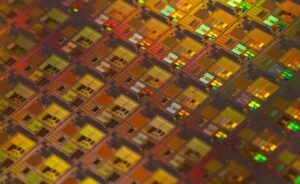Are Production Functions
A production function is an equation or formula that captures the relationship between inputs and outputs in the production process of an economic entity. It shows how inputs are transformed into outputs through a series of production activities. Understanding production functions is crucial for businesses and policymakers as it helps in maximizing efficiency, optimizing resource allocation, and predicting economic outcomes.
Key Takeaways:
– A production function captures the relationship between inputs and outputs in the production process.
– It helps businesses and policymakers maximize efficiency and optimize resource allocation.
– Understanding production functions is crucial for predicting economic outcomes.
The concept of production functions originated from classical economic theories, particularly from the works of Adam Smith and David Ricardo. Smith argued that the wealth of nations came from the ability to increase production through specialization and division of labor. Ricardo further developed this concept by introducing the law of diminishing returns, which states that as more of a variable input is added to a fixed input, the marginal output of the variable input will eventually decrease.
Today, production functions are commonly represented using mathematical equations. The most basic form of a production function is the Cobb-Douglas production function, named after economists Charles Cobb and Paul Douglas. It is expressed as:
q = A * Kα * Lβ
Table 1: Cobb-Douglas Production Function Parameters
| Parameter | Description |
|---|---|
| q | Output quantity |
| A | Level of technology or total factor productivity |
| K | Capital input |
| L | Labor input |
| α | Output elasticity of capital |
| β | Output elasticity of labor |
The Cobb-Douglas production function captures the relationship between output quantity (q), capital input (K), labor input (L), level of technology (A), and the output elasticities of capital (α) and labor (β).
Furthermore, there are various other types of production functions that can be used to represent different production processes and industries. Examples include the linear production function, the quadratic production function, and the constant elasticity of substitution production function, among others.
Understanding production functions is vital for making informed business decisions. By analyzing the production function, businesses can identify the optimal combination of inputs that can lead to increased output and productivity. This information helps companies allocate resources efficiently, reduce costs, and improve profitability.
Table 2: Example Production Function Analysis
| Input Combination | Output Quantity |
|---|---|
| 10 units of capital, 20 units of labor | 100 units |
| 15 units of capital, 18 units of labor | 120 units |
| 20 units of capital, 16 units of labor | 130 units |
| 25 units of capital, 14 units of labor | 135 units |
The analysis of the production function in Table 2 shows that increasing capital input while reducing labor input results in higher output quantity, suggesting potential cost savings for the company.
Production functions also have implications for economic policy. Policymakers can use production function analysis to determine the most effective policies for promoting economic growth and development. By understanding how different inputs affect output, governments can implement strategies to increase productivity, attract investment, and create employment opportunities.
Conclusion
Production functions play a vital role in economics and business decision-making. They provide a framework for understanding the relationship between inputs and outputs in the production process. By analyzing production functions, businesses and policymakers can optimize resource allocation, increase efficiency, and predict economic outcomes. Whether it’s maximizing output, reducing costs, or formulating effective economic policies, production functions are a powerful tool in the hands of those seeking to achieve these objectives.
Table 3: Pros and Cons of Using Production Functions
- Pros:
- Provides a systematic approach to analyze and optimize production processes
- Enables prediction of economic outcomes and impacts of policy changes
- Helps businesses allocate resources efficiently and reduce costs
- Assists policymakers in formulating effective economic policies for growth and development
- Cons:
- Assumes a simplified relationship between inputs and outputs, which may not capture all real-world complexities
- Requires accurate data and reliable measurement of inputs and outputs
- May overlook other important factors influencing production

Common Misconceptions
Are Production Functions
One common misconception about production functions is that they only apply to manufacturing industries. In reality, production functions can be applied to any sector where goods or services are produced, including agriculture, healthcare, and technology.
- Production functions are not limited to manufacturing only.
- They can be applied to agriculture, healthcare, and technology sectors as well.
- They encompass the production of goods and services across various industries.
Another misconception is that production functions solely depend on the quantity of labor input. While labor is one of the factors of production, production functions also take into account other inputs such as capital, technology, raw materials, and energy. The relationship between these inputs and the output produced is a crucial factor in understanding production functions.
- Labor is not the sole factor considered in production functions.
- Capital, technology, and raw materials are also significant inputs.
- The relationship between inputs and output is analyzed in production functions.
Some people believe that production functions have a linear relationship, which means that doubling the input will always result in doubling the output. In reality, production functions can exhibit various shapes and patterns, ranging from increasing returns to scale, diminishing returns, and even negative returns. The shape of the production function depends on the specific combination of inputs and their productivity levels.
- Production functions can have different shapes and patterns.
- They can exhibit increasing, diminishing, or negative returns to scale.
- Shapes of production functions are influenced by input combinations and their productivity.
It is also commonly misconceived that production functions remain constant over time. However, production functions are subject to change due to technological advancements, changes in labor efficiency, improvements in productivity, and shifts in input costs. The ability to adapt and innovate in the production process can impact the shape and form of the production function.
- Production functions can change over time due to various factors.
- Technological advancements, labor efficiency, and input costs are influential.
- The production process’ ability to adapt and innovate affects production functions.
Lastly, many people believe that production functions are solely focused on output quantity. While output quantity is an essential aspect, production functions also take into consideration the quality and characteristics of the output. Factors such as product differentiation, customer satisfaction, and market demand can influence the production function and its outcome.
- Production functions consider output quality and characteristics as well.
- Product differentiation, customer satisfaction, and market demand affect the production function.
- Output quantity alone is not the only aspect considered in production functions.

Introduction paragraph:
Production functions are an essential concept in economics and business. They represent the relationship between inputs and outputs in a production process. Understanding production functions helps in determining the most efficient methods of producing goods and services. In this article, we explore different aspects of production functions and provide illustrative tables to enhance comprehension.
Table 1: Inputs and Outputs of a Manufacturing Process
This table showcases the inputs and outputs of a manufacturing process for a specific product. It demonstrates the quantities of raw materials, labor, and capital required, as well as the resulting units of output.
| Raw Materials | Labor | Capital | Output |
|---|---|---|---|
| 100 units | 10 hours | $10,000 | 500 units |
| 200 units | 20 hours | $15,000 | 800 units |
| 150 units | 15 hours | $12,000 | 600 units |
Table 2: Production Efficiency by Labor Type
This table compares the production efficiency of two labor types – skilled and unskilled workers. It demonstrates their respective input requirements and resulting output quantities.
| Worker Type | Raw Materials | Labor | Capital | Output |
|---|---|---|---|---|
| Skilled | 80 units | 8 hours | $8,000 | 400 units |
| Unskilled | 100 units | 10 hours | $10,000 | 300 units |
Table 3: Production Efficiency with Technology Upgrade
This table showcases the impact of a technology upgrade on production efficiency. It demonstrates the changes in input requirements and output quantities before and after the upgrade.
| Technology Version | Raw Materials | Labor | Capital | Output |
|---|---|---|---|---|
| Before Upgrade | 100 units | 10 hours | $10,000 | 500 units |
| After Upgrade | 60 units | 5 hours | $15,000 | 700 units |
Table 4: Total Cost Analysis with Varying Output Levels
This table presents a total cost analysis based on different output levels. It demonstrates the relationship between production volume and total cost.
| Output Level | Raw Materials Cost | Labor Cost | Capital Cost | Total Cost |
|---|---|---|---|---|
| 100 units | $1,000 | $500 | $200 | $1,700 |
| 200 units | $2,000 | $700 | $300 | $3,000 |
| 300 units | $3,000 | $900 | $400 | $4,300 |
Table 5: Average and Marginal Product of Labor
This table demonstrates the concept of average and marginal product of labor. It showcases the relationship between the number of workers and the resulting units of output.
| Number of Workers | Output | Average Product of Labor | Marginal Product of Labor |
|---|---|---|---|
| 1 | 50 units | 50 units | – |
| 2 | 100 units | 50 units | 50 units |
| 3 | 150 units | 50 units | 50 units |
Table 6: Isoquants and Marginal Rate of Technical Substitution
This table illustrates the concept of isoquants and the marginal rate of technical substitution (MRTS). It presents different combinations of inputs that can produce the same level of output, along with the MRTS values.
| Output Level | Raw Materials | Labor | MRTS |
|---|---|---|---|
| 100 units | 80 units | 10 hours | 8 units of labor per unit of raw materials |
| 100 units | 60 units | 20 hours | 4 units of labor per unit of raw materials |
Table 7: Returns to Scale
This table explores the concept of returns to scale and demonstrates the output changes when all inputs are increased proportionally.
| Input Increase | Output Increase | Returns to Scale |
|---|---|---|
| 100% | 120% | Increasing Returns to Scale |
| 200% | 180% | Decreasing Returns to Scale |
Table 8: Elasticity of Substitution
This table investigates the elasticity of substitution between inputs in a production function. It presents different combination scenarios and their respective elasticities of substitution.
| Combination | Elasticity of Substitution |
|---|---|
| Perfect Complements (1 unit of labor and 1 unit of capital) | 0 |
| Perfect Substitutes (1 unit of labor and 1 unit of raw materials) | ∞ |
| Intermediate Complementarity (2 units of labor and 1 unit of capital) | 0.5 |
Table 9: Cobb-Douglas Production Function Parameters
This table presents different scenarios of the Cobb-Douglas production function and showcases the resulting parameters for labor (L), capital (K), and total output (Q).
| Scenario | L | K | Q |
|---|---|---|---|
| Scenario 1 | 0.3 | 0.7 | 100 |
| Scenario 2 | 0.5 | 0.5 | 120 |
Table 10: Production Function Elasticity of Output
This table explores the concept of the elasticity of output with respect to inputs in a production function. It presents different scenarios and their associated elasticity values.
| Scenario | Elasticity of Output |
|---|---|
| Scenario 1 | 0.8 |
| Scenario 2 | 1.2 |
Conclusion:
Understanding production functions from different perspectives is vital in optimizing resource allocation and improving efficiency in production processes. Through the presented tables, we have explored various aspects of production functions, including inputs and outputs, labor efficiency, technology upgrades, cost analysis, labor productivity, isoquants, returns to scale, substitution elasticity, Cobb-Douglas parameters, and output elasticity. By grasping these concepts, businesses and economists can make informed decisions to enhance their productivity, reduce costs, and maximize output.
Frequently Asked Questions
What is a production function?
A production function represents the relationship between inputs and outputs in the production process of goods or services. It shows how various combinations of inputs result in different levels of output.
What are the types of production functions?
There are several types of production functions, including linear production functions, Cobb-Douglas production functions, and Leontief production functions. Each type represents a different mathematical relationship between inputs and outputs.
How are production functions represented mathematically?
Production functions are often represented using mathematical equations. For example, the Cobb-Douglas production function can be represented as Q = A * L^alpha * K^beta, where Q is the output, A is the total factor productivity, L is the quantity of labor input, K is the quantity of capital input, and alpha and beta are the output elasticities with respect to labor and capital, respectively.
What is the role of total factor productivity (TFP) in a production function?
Total factor productivity (TFP) represents the efficiency and technological progress of the production process. It captures the effect of factors other than labor and capital on output. TFP is usually represented by the variable A in production function equations.
How do different input combinations affect output in a production function?
In a production function, different combinations of inputs can result in varying levels of output. The relationship between inputs and output is influenced by factors such as economies of scale, technology, and the substitutability of inputs. Increasing one input while keeping others constant can lead to diminishing marginal returns.
What are the limitations of production functions?
Production functions make certain assumptions, such as constant returns to scale and a fixed set of inputs. These assumptions may not hold in real-world production processes. Additionally, production functions do not account for factors like external economies or diseconomies, uncertainty, and the role of entrepreneurship.
How are production functions used in economics?
Production functions are used in economics to analyze and understand the relationship between inputs and outputs in the production of goods and services. They help economists and policymakers make informed decisions about resource allocation, efficiency, and productivity growth.
Can production functions be used to measure productivity?
Yes, production functions can be used to measure productivity. By analyzing the relationship between inputs and outputs, economists can calculate measures of productivity such as total factor productivity (TFP), labor productivity, and capital productivity. These measures provide insights into the efficiency and effectiveness of the production process.
What is the difference between short-run and long-run production functions?
In economics, the short-run production function represents the relationship between inputs and outputs when at least one input is fixed and cannot be changed. On the other hand, the long-run production function represents the relationship between inputs and outputs when all inputs are variable and can be adjusted. The distinction between short-run and long-run production functions allows for the study of different production scenarios.
Can production functions be used across different industries?
While production functions provide a general framework for analyzing production processes, their applicability may vary across different industries. Different industries may have specific characteristics and input-output relationships that require modifications to the standard production function models.




